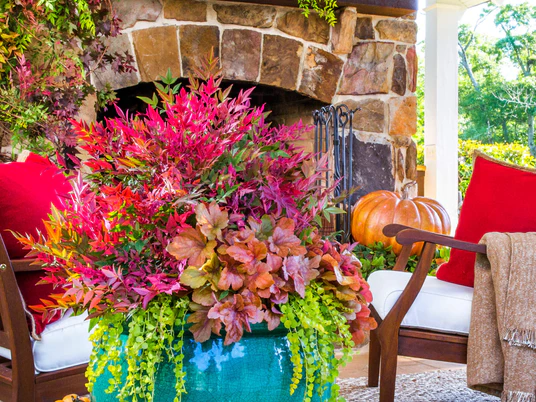Spider Web Fatsia
Spider Web Fatsia - 2.5 Quart is backordered and will ship as soon as it is back in stock.
Description
Description
The Spider Web Fatsia is a beautiful evergreen shrub composed of incredible green and white variegated foliage. In late autumn, clusters of white flowers will bloom and give way to the ornamental, glossy, black berries. New to the Plantbymail.com catalog, this rare and highly desirable variegated Fatsia will surely attract attention far and wide! Although it is a slow grower compared to other Fatsia plants it is not uncommon to see up to a foot of growth in a single growing season after the shrub has become acclimated to its conditions. On average, a fully mature Fatsia Japonica will reach 5' H x 5' W. Much more compact than most Fatsias and hardy in USDA zones 8 - 10 or in a protected area such as against the side of your home in zone 7.
Morning and late evening sunlight are both perfectly fine for the plant to receive, but you will want to avoid mid-day sun as it may be too much heat for the Fatsia to remain healthy. Due to the size of the leaves they are vulnerable to sun burn if not properly placed or protected. Usually planted as a specimen with other plants surrounding it. It looks very tropical and is adds a unique look to any landscape. In zones 9 - 10 you will want to use this Fatsia as a container plant, but those of you in 7 - 8 will have more success with it as a foundation plant in a well protected area.
Additionally, the big leaf paper plant has a compact growth habit and is both disease and pest resistant. Maintenance requirements for this plant is fairly low and once established they are fairly drought tolerant with a low to medium need for watering.
Spider Web Fatsia Care
Hardy from USDA zones 8a - 10b.
They are not pick about soil conditions at all and will grow in all but the most extreme situations. Whether it is heavy clay, loam, sand or poor soil quality your Fatsia should still continue to thrive. They grow best in partial shade and tolerate full shade well. Avoid growing in direct sunlight as this may lead to heat damage. There have been stories of success growing the japonica in zones 7a and 7b, but they will need to be protected from frigid temperatures. Foundation planting becomes a necessity in these zones while growing them in a container that can be moved inside would be ideal.
Before planting be sure to water and once it has been placed in the soil water deeply so that it is able to settle into the surrounding ground around the root ball. Once full established the Japanese Fatsia is quite drought tolerant and water wise. As the shrub ages occasionally remove any stems that have become bare and new growth should quickly appear from the base to take their place.
For a new twist on Fatsia, check out Angyo Star Fatshedera, which is a hybrid of Fatsia and English Ivy that has been introduced by Southern Living Plants!
Care & Use
Care & Use
Spacing Recommendations
Spacing Recommendations
-
Scientific Name
-
Hardiness Zone8, 9, 10
-
Sun ExposurePart Sun to Part Shade
-
Evergreen or DeciduousEvergreen
-
FeaturesDisease Tolerant, Flowering, Heat Tolerant, Variegated, Winter / Fall Foliage Color
-
Feature ColorGreen, White, Yellow
-
UsesHouseplant, Accent, Container, Mass Planting, Woodland Garden
-
Water NeedsMedium
-
Bloom SeasonFall
Growing Zones : 8, 9, and 10


Southern Living Plants







